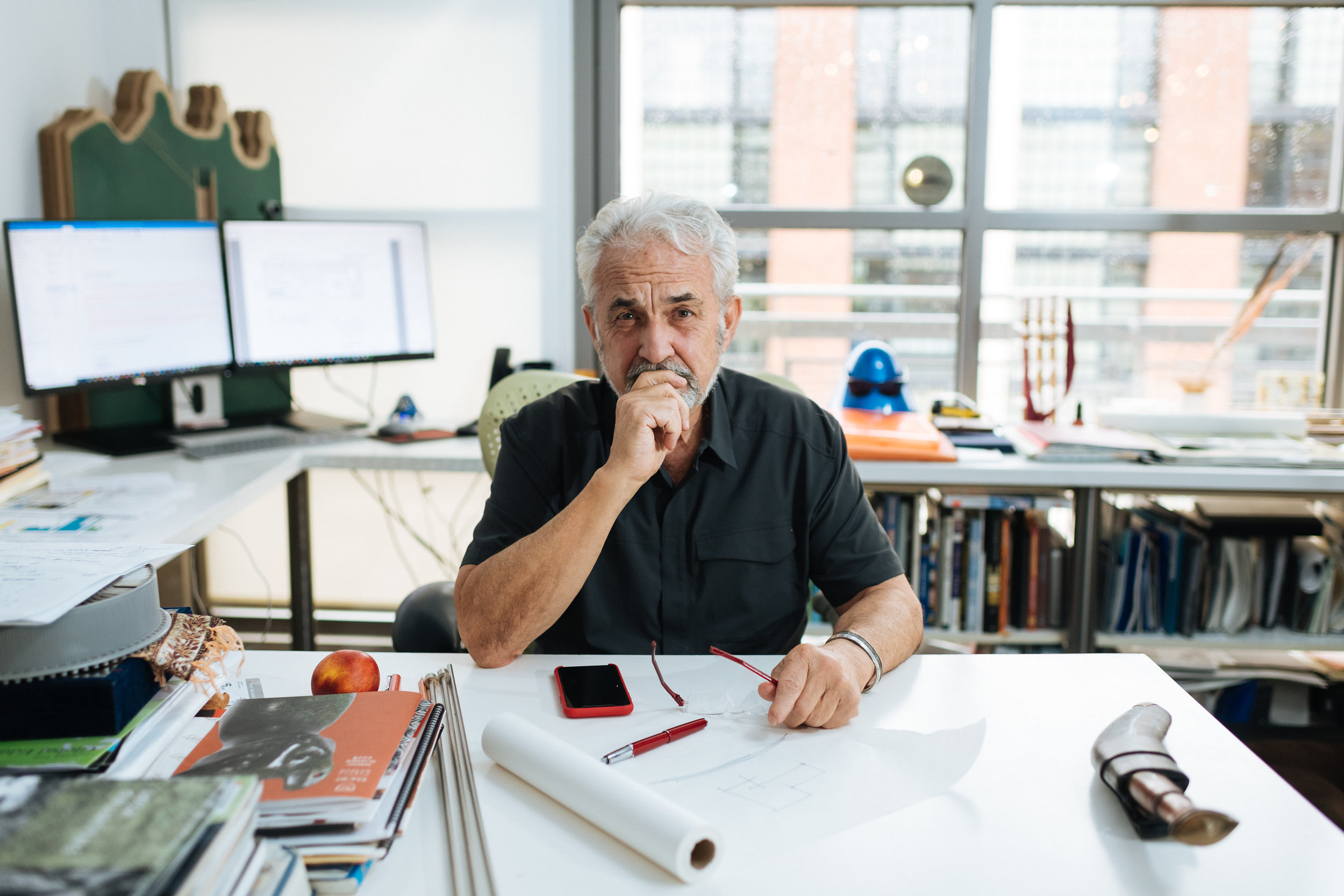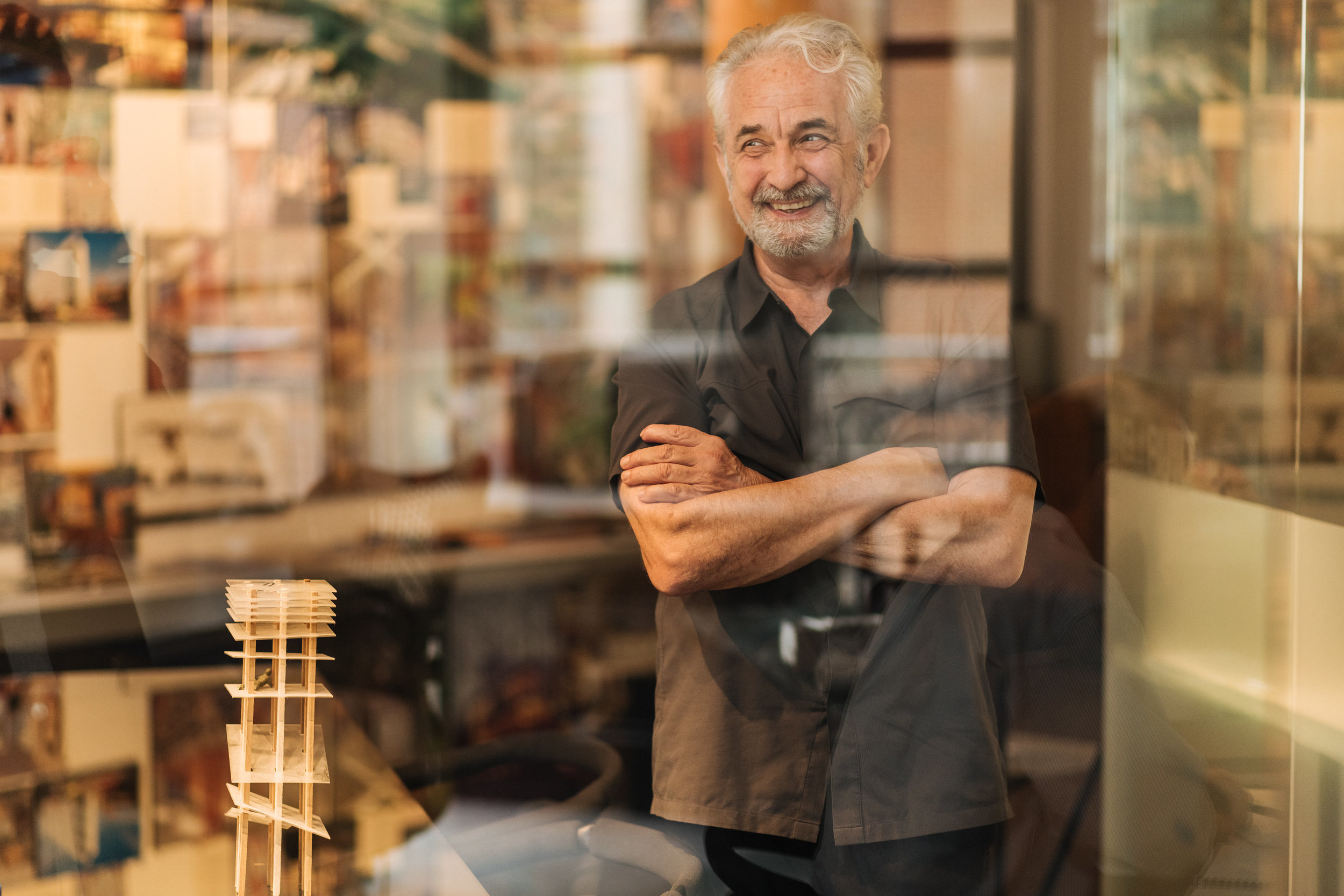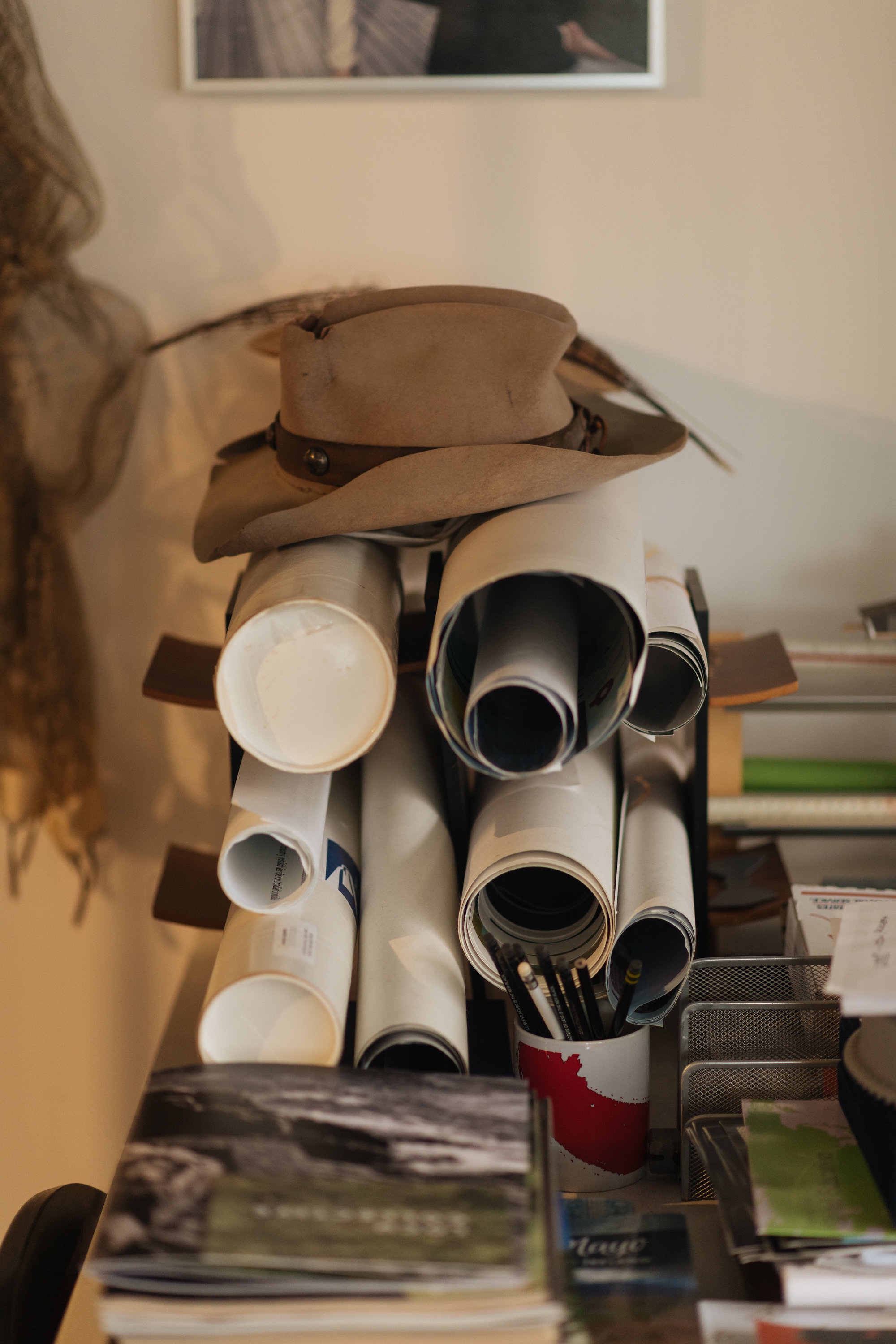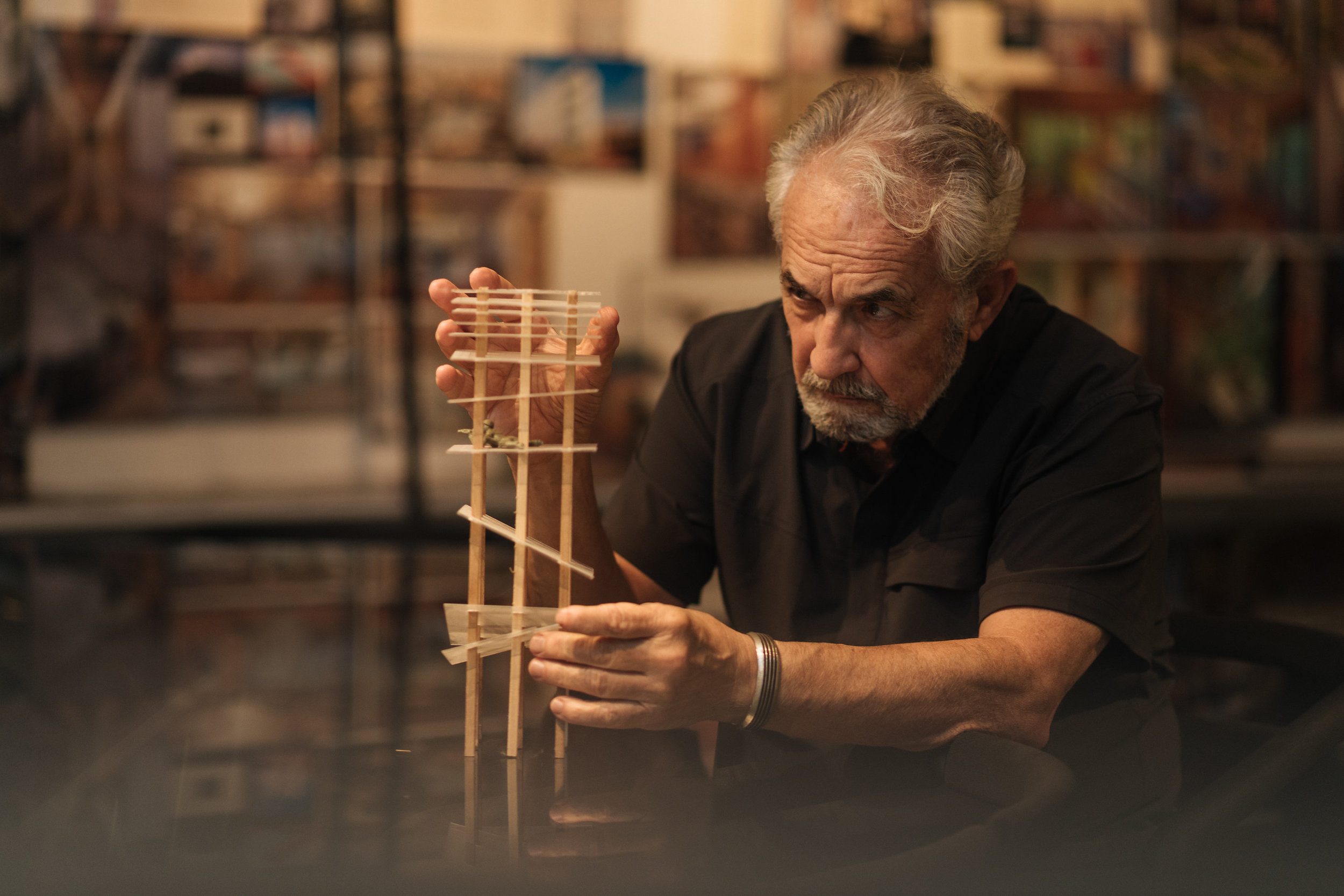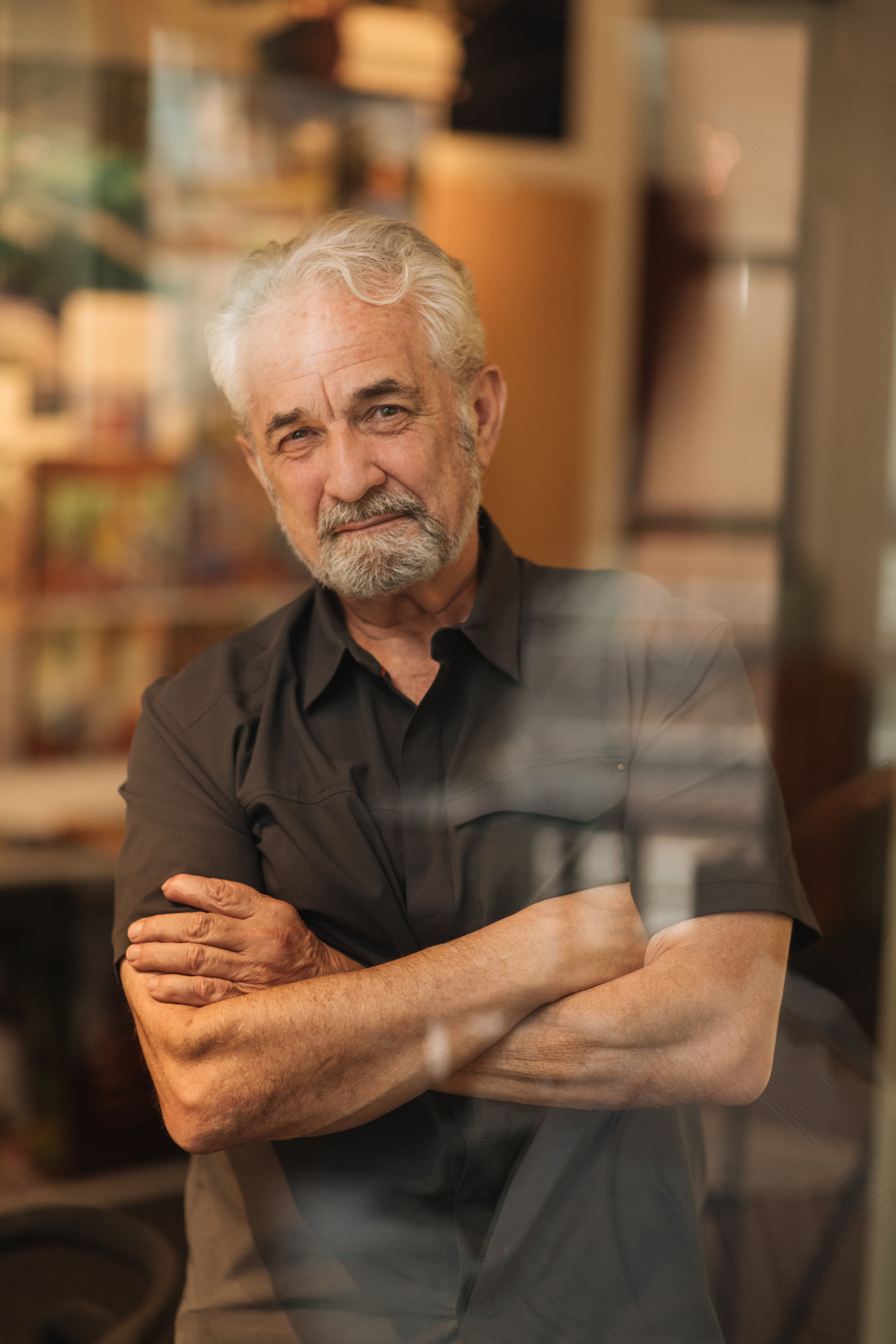‘I Felt Like My Whole Body Evaporated’
Driving through the Spanish mountains on a beat-up motorcycle he bought after working at a German laundry for the summer, 17-year-old Travis Price arrived at the Alhambra blistered from the heat.
‘When I looked up at the ceiling and saw the infinite geometries merging into a singular dome of oneness, I felt like my whole body evaporated. To me, that’s the clue in my mind that somebody out there knows the design tricks to take me somewhere.’
For more than 40 years, the principal of Travis Price Architects has been called to do the same for others. Born in Georgia and raised in Panama and Germany, Travis’ family traveled often for the military, yet home was in the deep South. He loved watching Tarzan and building treehouses, and knew at 12 he was going to be an architect.
Travis enrolled in architecture school, but was equally seduced by ‘the great books school’ he heard about while in Heidelberg.
‘I told my professors, I have to stop for four years. I’ll be back, but I have to go understand the history of humanity to understand the history of architecture. I went to St. John’s in Annapolis and fell in love with it. I felt muse was calling me. This was a true liberal arts education. Architecture would be my subsequent training.’
St. John’s had a sister campus in Santa Fe. Travis moved West for a semester, and stayed for five years. Largely, he was drawn to a group of ‘interesting characters’ at the University of New Mexico who were studying changes in architecture through the backdrop of Chaco Canyon. It was there that Travis had his first breakthrough in ecology and cultural design.
‘I was camping with some archaeologists and a professor from Harvard, J.B Jackson, and I just kept watching snow melt on these south-facing curved buildings and thinking, that building is passively melting the snow. I’m going to build my thesis around it. I built my first village of passive solar homes and coined the very word, ‘passive solar’. I was trailblazing as one of the first big green pioneers.’
Travis moved from Santa Fe to New York City, from one canyon to another, and spent the next five years working with self-help housing. He put the first solar collectors up in 1976 on the Lower East Side, and installed the first wind machine in Manhattan the following year—turning the meter backwards, and promptly getting sued by the utility company Con Ed.
He won the lawsuit all the way to the New York State Supreme Court.
‘Next thing I knew I was down here in DC at 24-years-old, testifying before Congress about that right to co-generate power. I was a full-fledged green activist from rural to urban. In the 90s the greenwash took over, and now, we’re in what I call the Green Bling Era. Everyone is green because they wear Toms or something equally token. Give me a break. Do something constructive and turn off a light bulb.’
The green story is a great one to tell, but Travis missed the purple, which he considers the color of culture. His practice and teaching are informed by human storytelling, filtered through his three design lenses of technology, ecology, and—most importantly—mythology.
‘Mythology is the culmination of the human story. All of our architecture begins with, ‘What’s the story?’ The Classical period did this well for its time. Now, not unlike Coltrane or Picasso or Gehry, we can shape buildings however we want. But the shaping of the shapers, and how that shape profoundly provokes an emotion, is really the higher ground for me. How to you get from a story to a poem, from a poem to a sculpture, from a sculpture to a piece of architecture?’ This is my passion and quest—modern architecture inspired by cultural literacy.
A church, a synagogue, a mosque, or a Hindu stupa—each has a specific spiritual, sacred emotion it aims to evoke. Travis says those are easy rules to follow as an architect. But how do you do the same for the common home, and the common man?
‘To paraphrase Churchill, first we shape our buildings, thereafter, they shape us,’ says Travis, who lives in a glorified version of his 12-year-old boy’s dream—a four-story treehouse in Rock Creek Park. ‘That’s the home and heart of my search. We love to be cool as modern architects. But for me, the real breaking ground is cultural literacy and modern architecture for the 21st century. That’s where the St. Johnny comes back.’
With clients, a bottle of wine helps, but Travis says the real way to achieve cultural literacy with each project is to simply ask questions—then listen for the story and watch for the glint of happiness in a client’s eye.
‘We share deep, common dreams that are mythic inside of us, and if you start reading about it, you spot it in people. You listen to the echoes of the mythic stories in them, and with that observation you know exactly how to shape a space that evokes their emotion. A good architect can do that in a modern idiom. Budget, zoning, and materials are a must, of course, but the real depth and shape of someone’s story comes from something where you suddenly see their face light up, and you start hearing adjectives. Suddenly, I get that sense of what really gets to their heart, inspires a poem, and thus a modern-shaped piece of architecture. At last the client has shoes that fit them, and not a cookie cutter of homogenization.’
Travis’ psychological approach has evolved. For a long time, he intuitively knew all the pieces were there, but struggled to articulate them within his practice. Then in 2000, he traveled to the Yukon and had an epiphany.
‘I was a single parent, raising two children alone, and I just sort of saw it. I saw the hunger of everybody wanting a story; their own temple, much like the front of a Victorian, Georgian, or Romanesque house. Something that’s your statement, but not a historic copy. Something modern and authentically them. Everyone wants nature, and everyone wants more space. It’s akin to the feeling of a motorcycle riding across the desert. I began to weave it together in more glorified terms. Sunshine, Highways and Temples—that is, Nature, Expansiveness, and the Mythic.’
Travis subscribes to a golden thread of the psyche; the notion of the one and the many. He can tune to it like a musician, but says he would never presume to name it.
‘My view of the cosmos is very spiritual. I think that it’s not about finding only the essence of our humanity. Once you feel the essence of the “all”, the golden thread appears. However, it’s looking at the glory of the thread’s weave that creates the human story. I’m far more interested in the poetic complexity of humanity than I am in the singular harmonizer. In that weave you see the invisible unity. It’s the joy of expressing it so differently in so many places that becomes humanizing.’
Clearly, Travis isn’t your average architect. His fight against cultural homogenization has earned him dozens of AIA awards through a dedicated program in his practice, the Spirit of Place – Spirit of Design Build Expeditions. Georgetown serves as his muse in all of it.
‘History isn’t defined by copies or superficial associations; it’s defined by authentic change and the spirit of the place. The spirit of Georgetown is a long sequence of authentic changes. It’s a menu of cultures. Rich history meets sublime sophistication. Georgetown is like an Irish story. The bricks still talk to you. They’re talking to me, along with the steel and the glass!’
